Kasteel Ammersoyen (Ammerzoden, NETHERLANDS)
Read this post on TravelFeed.io for the best experience
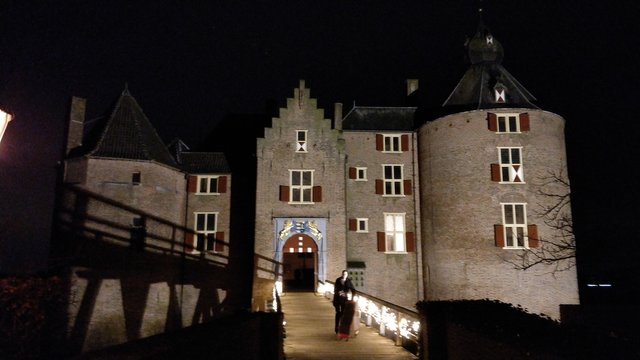
The Kasteel Ammersoyen is one of the last standing medieval era castles in The Netherlands having been built circa 1300. Located in the province of Gelderland, it was in relative disrepair until it's rebuilding after World War 2 which unearthed quite a number of artifacts which are now housed in the Kasteel museum.
In the times P.C. (pre-Corona), I would find myself in these little known towns and places in The Netherlands, with many old historical buildings and museums playing double duty in the evenings as chamber music sized concert venues for the local population. Kasteel Ammersoyen is one of the more interesting buildings that I have played in due to the fact that it is one of the older buildings left standing in the Dutch region. Most of the existing historical buildings are from the Dutch Golden Age (around the 18th century), and buildings from earlier have not tended to survive in this country.
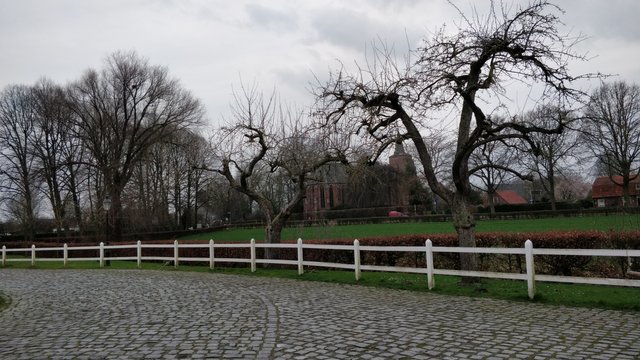
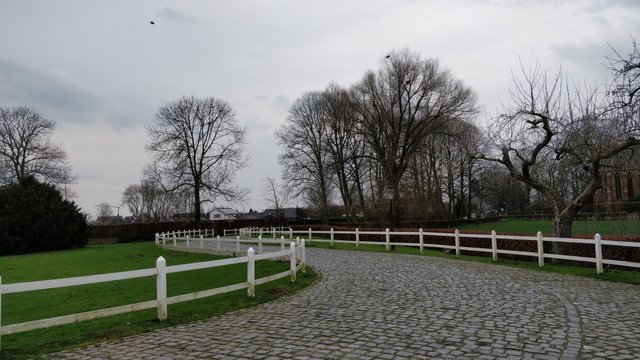
The surrounding lands around the castle are quite serene and picturesque, much of the landscape could easily have come out of a Van Gogh painting or some other artist from the Dutch Golden Age. The characteristic trees without leaves, the flat and rural landscape, cobbled paths and the shallow bodies of water.
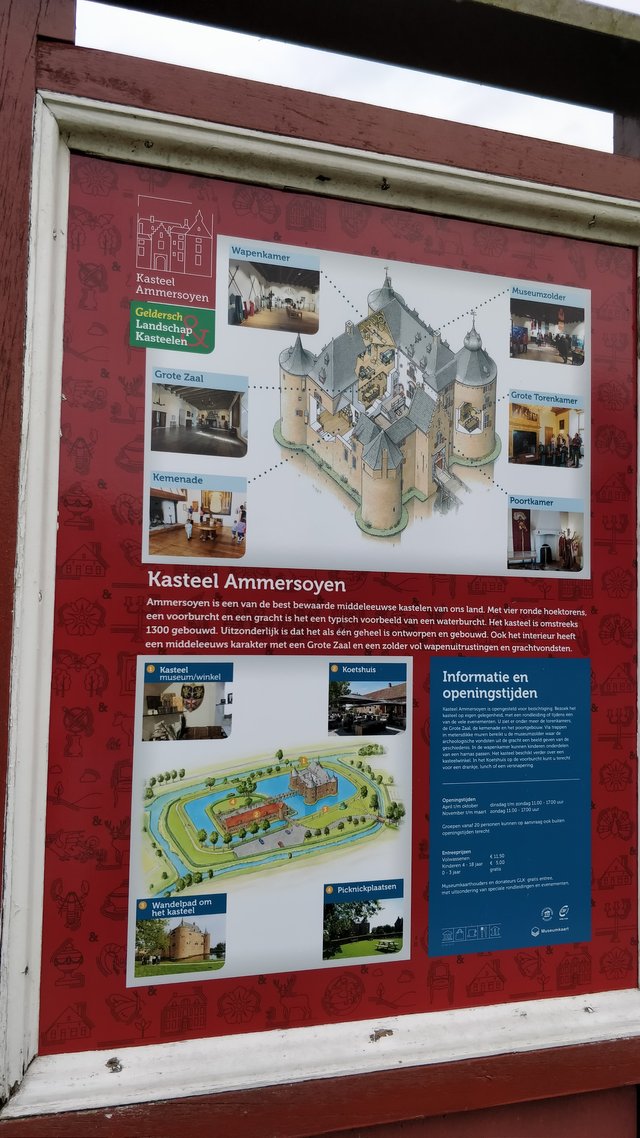
Many of the castles in the Dutch region were not built in the style of fortresses that we more commonly associate with the medieval age. The more familiar castles from movies and childhood fantasies tend to hail from previous centuries, before the introduction of gunpowder in the early 14th century. The high walls and ramparts of those castles would have been wasted effort after the introduction of cannons to the battlefield.
So, the Kasteel Ammersoyen resembles a grand manor house rather than the gigantic stone fortresses of previous centuries. In fact, all of the "castles" in The Netherlands refer to this type of lighter more administrative rather than defensive fortification!
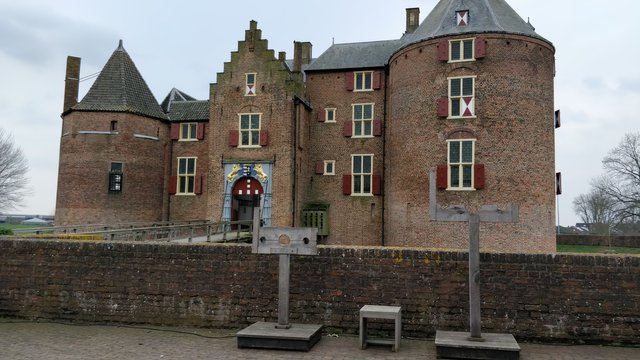
Every good castle, regardless of the era in which it was built, still needs a place for punishment. A good sturdy stock is a nice reminder that no mistakes will be tolerated in the coming concert!
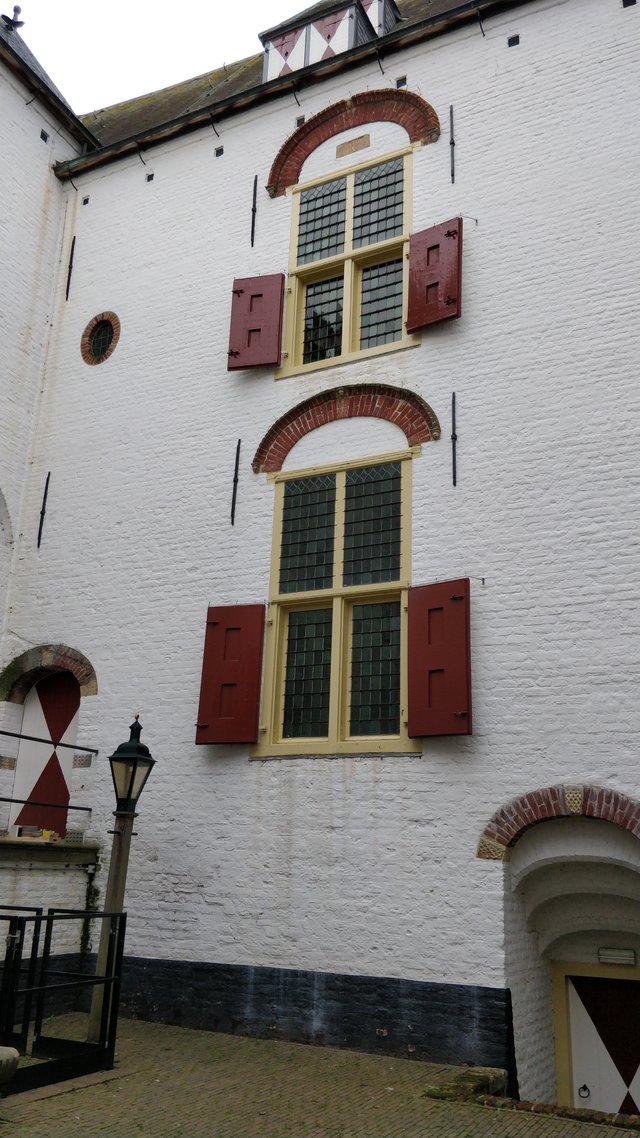
The building is multi-leveled, built mostly from brick as is the norm in The Netherlands. I'm not an engineer, but I suspect that the preference for brick over more solid and large blocks of construction material is due to the ever shifting ground that forms the basis of much of Netherlands. Much of the groundwork lies on unsteady marshland and reclaimed seabed rather than solid rock.
The shutters of the windows are very much a characteristic of older houses of The Netherlands, with strong winds being kept at back by flat boards that wouldn't catch too much of the force of the wind. At least many of these windows were not boarded up or bricked over due to the taxation laws of Napoleon!
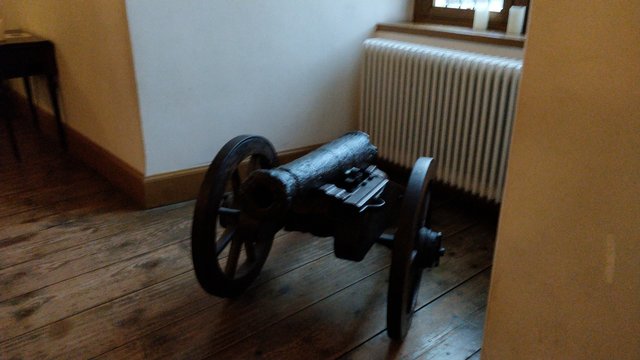
This room served as our "green" room, where we could leave our cases and belongings. Like every good living room, it was tastefully adorned with a small functional cannon.
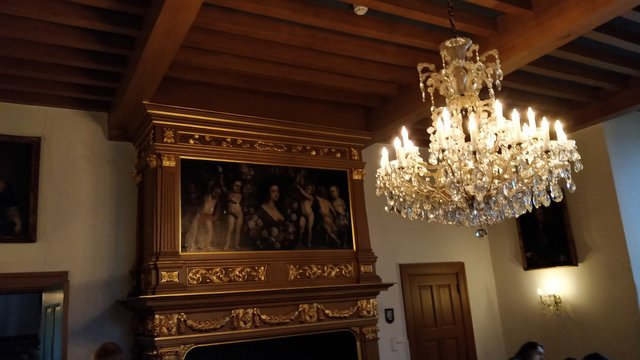
On the other side of the room was a non-functional (well, at least not in use when we were there) ornamented fireplace with a beautiful painting from the Golden Age (so a bit of a mix of eras there, seperated by more than quite a few centuries!). Also, quite an amazing chandelier to light the otherwise dark room... although, in the end, I would have preferred a lit fire... it was freezing on this evening and some warmth would have been preferable to light! Especially as cold hands and concerts are not the best combination!
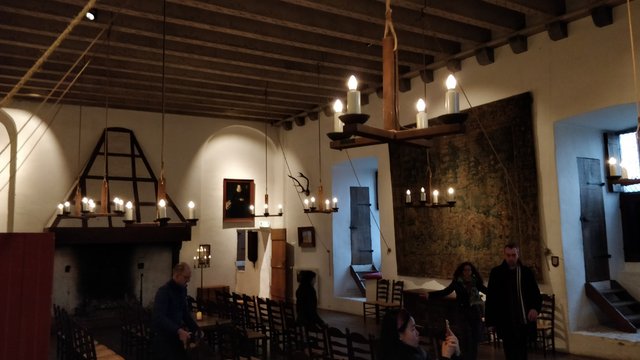
The actual concert room was also quite dimly lit and even colder than the other room! So, never discount what you have... things could always be much much worse!
This room housed many more age appropriate decorations on the walls... with old tapestries from that were uncovered in the rebuilding of the site.
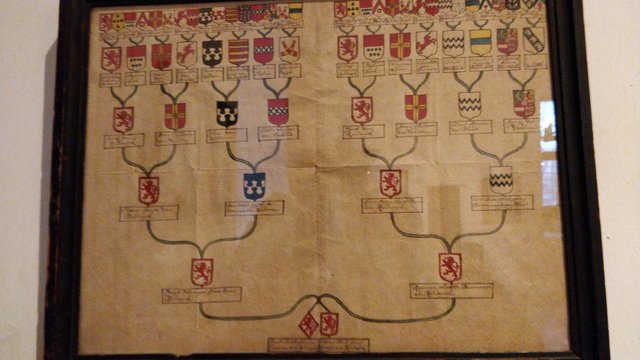
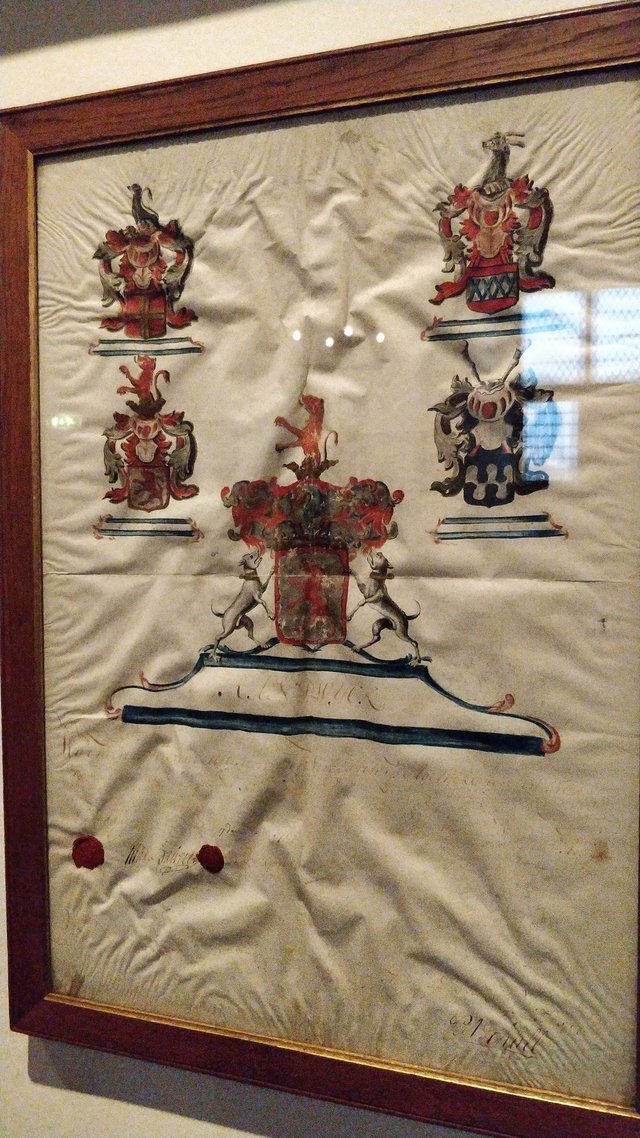
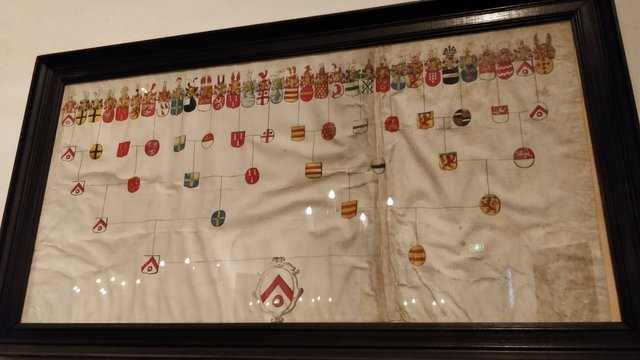
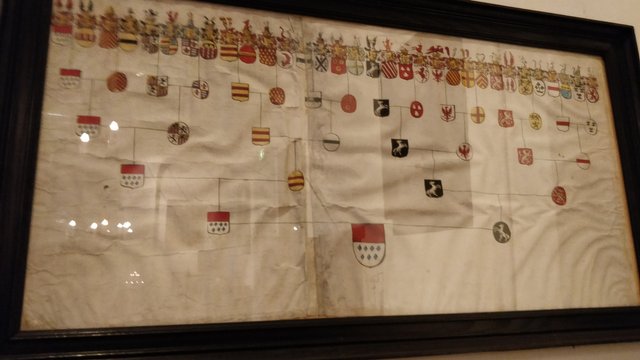
Many historical lineages were depicted in various tapestries and weavings. However, these were done with the coat of arms of the various lineages and not in written form, so it was quite hard to decipher without some pre-knowledge of the various symbols. Still, you can see how various lines have merged and linked together in the ownership of the Kasteel.
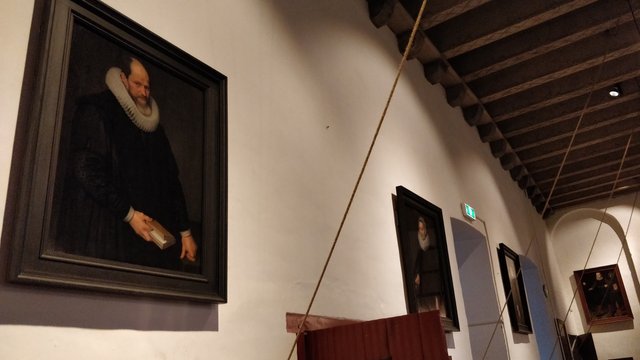
Also, the old pre-Golden Age oil paintings on wood were in abundance along the walls. You can see the common dress of the time for the nobility, the plain black and white collars that were the norm in these sorts of paintings to reflect the austere Lutheran/Protestant faith that was dominant in the region.
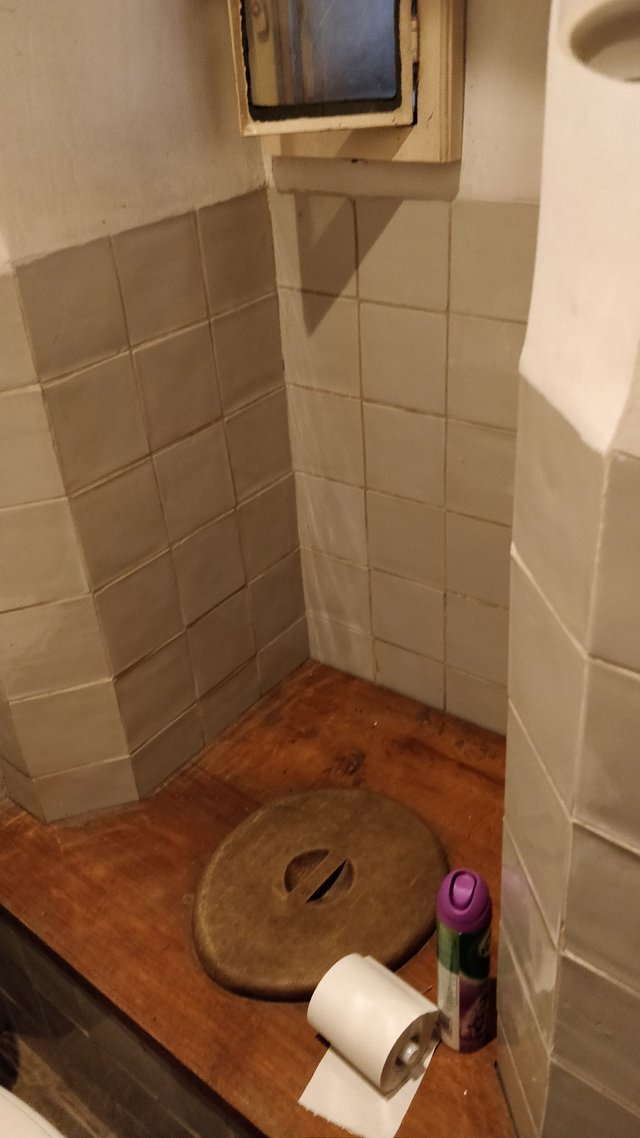
... and if you were so inclined, there was also a very old fashioned toilet! Dropping straight down into the moat below! Trust me, it was bloody freezing and so I opted for the more modern toilet right next to it!
Congratulations @bengy! You received the biggest smile and some love from TravelFeed! Keep up the amazing blog. 😍 Your post was also chosen as top pick of the day and is now featured on the TravelFeed.io front page.
Thanks for using TravelFeed!
@smeralda (TravelFeed team)
PS: Have you joined our Discord yet? This is where over 1000 members of the TravelFeed come together to chat. Join us!